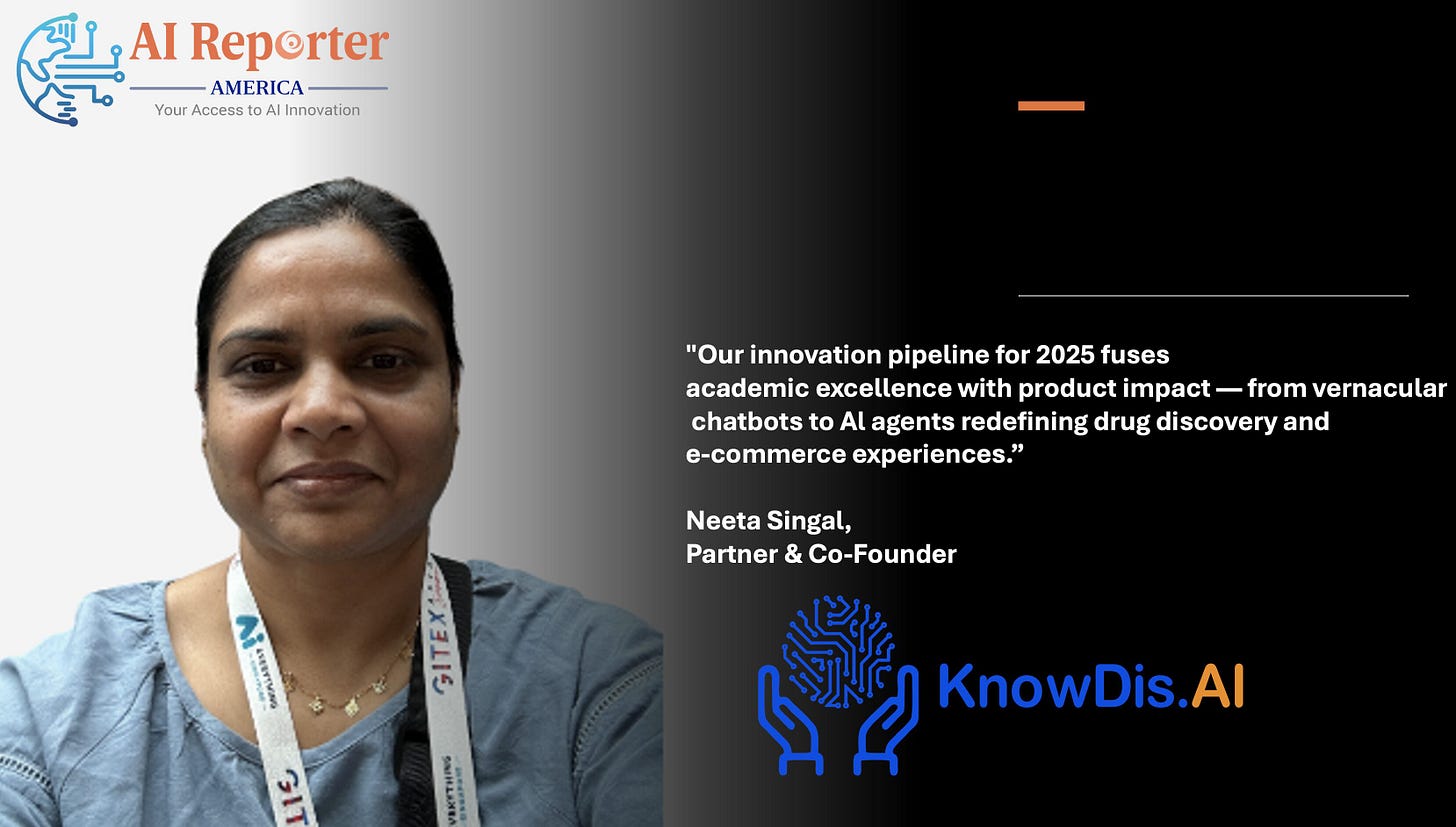KnowDis AI Newsletter- May 2025
Explore the power of AI in e-commerce with KnowDis AI’s monthly newsletter. Stay updated on innovations, insights, and our journey in transforming industries with machine learning.
Advancing AI Reasoning Research & Methodologies
Unlocking the Next Frontier in AI: Reasoning that Adapts, Learns, and Understands
Artificial Intelligence has progressed rapidly in recent years, but one of the most transformative directions is in the area of reasoning—the ability of machines to connect information, adapt to context, and solve problems more like humans do. The challenge is no longer just about feeding data to models—it's about enabling them to think through it.
In this edition, we explore some of the most promising developments in AI reasoning: Skywork R1V, a multimodal model that uses chain-of-thought reasoning to interpret visual and textual data in unison; Meta-Reasoner, a novel framework that guides large language models (LLMs) dynamically during inference to enhance logical accuracy and efficiency; OpenAI's o4-mini, a compact yet powerful model optimised for visual reasoning; and X-Reasoner, a framework designed for generalisable multimodal reasoning across various domains.
Skywork R1V: Pioneering Multimodal Reasoning with Chain-of-Thought
One of the central limitations of many AI systems today is their siloed approach to information. Text and images are often treated as separate domains, processed in isolation. Skywork R1V takes a radically different approach. It’s a multimodal reasoning model that merges visual and textual information through an adaptive, chain-of-thought framework.
What this means in practice is that Skywork R1V can look at an image, read a description or accompanying text, and reason across both sources in a deeply integrated manner. For instance, when presented with a scientific diagram and an abstract, the model doesn’t just parse each element—it draws connections, infers relationships, and forms explanations.
At the heart of R1V’s capability is its adaptive reasoning mechanism, which enables it to form dynamic inference chains depending on the complexity and ambiguity of the input. Much like a human analyst adjusting their line of thought in real-time, R1V selects the reasoning path best suited for each scenario.
Key Features of Skywork R1V:
Multimodal Fusion: Integrates images and text in a unified architecture for deeper contextual understanding.
Efficiency in Inference: Leverages adaptive reasoning to minimise unnecessary steps and focus computational power on high-relevance data points.
Broad Applications: From legal and scientific documents to medical diagnostics and data visualisation tasks, Skywork R1V opens new doors for multimodal AI deployment.
By fusing perception and cognition, Skywork R1V marks a turning point in building models that are not only aware of context but are also capable of forming intelligent, task-specific reasoning chains.
Meta-Reasoner: Optimising Inference-Time Reasoning in LLMs
While large language models have revolutionised natural language processing, they are often static in their reasoning approach, generating answers linearly without adapting to the complexity of the problem. The Meta-Reasoner framework changes that.
Rather than passively generating outputs, Meta-Reasoner operates like an internal coach that monitors and adjusts the model’s reasoning in real-time. It intervenes during inference to suggest alternative reasoning strategies, effectively helping the LLM think more critically and selectively.
This meta-cognitive approach results in models that are not just more accurate but also more explainable and resource-efficient.
What Makes Meta-Reasoner Unique:
Inference-Time Control: Unlike fine-tuned models that stick to predefined behaviours, Meta-Reasoner introduces flexibility mid-process, adapting dynamically to the task at hand.
Boosted Accuracy: In tasks such as math problem solving, coding, and structured reasoning, the Meta-Reasoner-enhanced models significantly outperform standard LLM baselines.
Self-Correcting Behaviour: The framework can spot inconsistencies or weak reasoning steps and initiate self-correction, akin to a human editor reviewing a draft.
OpenAI o4-mini: Compact Powerhouse for Visual Reasoning
OpenAI's o4-mini, released in April 2025, represents a significant advancement in multimodal reasoning capabilities. Building upon its predecessors, o4-mini integrates sophisticated visual processing with chain-of-thought reasoning, enabling it to interpret and analyse complex visual data such as diagrams, charts, and handwritten notes. This model is designed to "think with images," allowing for more nuanced understanding and problem-solving across various domains.
Key Features of OpenAI o4-mini:
Multimodal Reasoning: Combines textual and visual inputs to enhance comprehension and inference.
Enhanced Visual Processing: Capable of analysing intricate visual information, facilitating tasks like interpreting medical imagery or technical schematics.
Optimised Performance: Offers improved efficiency and accuracy in reasoning tasks, making it suitable for applications in healthcare diagnostics, financial analysis, and educational tools.
X-Reasoner: Generalizable Multimodal Reasoning Across Domains
X-Reasoner is a novel framework introduced in May 2025 that focuses on generalizable reasoning across various modalities and domains. Unlike models trained on specific datasets, X-Reasoner leverages general-domain text-based post-training to achieve robust performance in both multimodal and out-of-domain tasks. This approach allows the model to adapt its reasoning capabilities to diverse scenarios without the need for extensive domain-specific training.
Key Features of X-Reasoner:
Generalizable Reasoning: Demonstrates strong performance across different modalities, including text and vision, and adapts to various domains.
Two-Stage Training Approach: Utilises supervised fine-tuning with distilled chain-of-thoughts, followed by reinforcement learning with verifiable rewards to enhance reasoning capabilities.
Domain Adaptability: Further training on domain-specific text-only data enhances performance in specialised areas, such as medical diagnostics.
X-Reasoner's ability to generalise reasoning across modalities and domains positions it as a versatile tool for applications requiring adaptable and robust AI reasoning.
Why These Advances Matter
These advancements could dramatically improve how AI is applied in sensitive or complex domains:
Healthcare: Models can interpret multimodal patient data while adjusting reasoning in real-time.
Finance: AI systems can assess risk not just by data patterns, but by logical inference and causal understanding.
Education: Intelligent tutors can reason dynamically, offering personalised support based on how a student thinks.
As AI becomes more integrated into human decision-making, the importance of adaptive, transparent, and multimodal reasoning cannot be overstated.
KnowDis AI in News
AI Reporter America covers KnowDis AI’s ambitious 2025 roadmap, focusing on transformative innovations in multilingual tech, e-commerce, and healthcare. Check out the article to learn more.
KnowDis AI is featured in FinTech Business Asia for its innovative use of AI in financial services. The article delves into our impact through search and language technologies.





